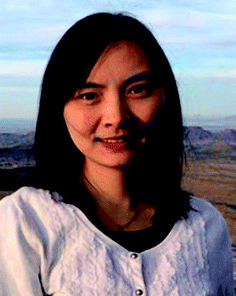Materials Horizons Emerging Investigator Series: Nan Liu, Beijing Normal University, China
Nan Liu, PhD, is currently a professor at the College of Chemistry at Beijing Normal University, and a research scientist at the Beijing Graphene Institute. She received her bachelor's degree from Jilin University in 2006 and PhD degree from Peking University under the supervision of Professor Zhongfan Liu in 2011. She did her postdoctoral research in Professor Zhenan Bao's group at Stanford University from 2011 to 2016. She joined the College of Chemistry at Beijing Normal University as a principal investigator in September 2017. Her group's main research interest focuses on developing new functional two-dimensional materials and interfacing with soft materials for flexible electronics, in particular wearable healthcare devices for bio-signal monitoring and human-machine interfacing.
Read Nan Liu's Emerging Investigator Series article ‘A Lamellibranchia-inspired epidermal electrode for electrophysiology’ and read more about her in the interview below:
MH: Your recent Materials Horizons Communication reports a Lamellibranchia-inspired gel-free epidermal electrode to acquire high-quality electrophysiological signals based on a novel polymer substrate design. How has your research evolved from your first article to this most recent article and where do you see your research going in future?
NL: Our first PDMS based skin-like polymer was a bipyridine (Bpy) modified PDMS elastomer crosslinked by Zn2+ as the coordinator (ACS Appl. Mater. Interfaces 2020, 12, 1, 1486–1494). Our paper here reports a lamellibranchia inspired polymer, composed of a double-phase modified PDMS elastomer with hydrogen bonds and disulfide bonds as dynamic crosslinkers. Both of these two reported polymers are transparent, stretchable and self-healable, however, due to different structural design, the recent one has additional gentle adhesive and biocompatibility merits. Combined with silver nanowires, this polymer (namely STAR) based electrode can accurately detect electrophysiological signals and control an artificial limb. In the future, we will blend the STAR polymer with conductive species to achieve a skin-like conductor with uniformly distributed conductivity, so as to facilitate the connection between the electrodes and measurement setup. The stable electrical connection will benefit from stable signal recording for real applications.
MH: What aspect of your work are you most excited about at the moment?
NL: The most exciting achievement in this work is that the skin-attachable polymer can be simultaneously stretchable, transparent, adhesive, rapidly self-healing and biocompatible. Combined with silver nanowires as conductors, STAR can be employed as a self-healing and gel-free skin electrode for electrophysiological signal recording and human-machine interfacing.
MH: In your opinion, what are the most important questions to be asked/answered in this field of research?
NL: For epidermal electrophysiology, the most difficult problem is obtaining gel-free electrodes for long-term monitoring of electrophysiological signals with high quality and low motion artefact. In particular, for surface electromyography (sEMG) and electroencephalography (EEG), the signals are so weak that they require the epidermal electrodes to be ultra-conformal on skin and super conductive for sensing. Polymers that can mimic skin function and conformally attach on skin are essential parts for such epidermal electrodes. Therefore, synthesis of skin-like and adhesive polymers is important in the field of epidermal electrophysiology.
MH: What do you find most challenging about your research?
NL: The most challenging part about accurate epidermal electrophysiology is the stable connection between the electrodes and measurement setup. This is because the weak signals will easily be interfered by the “soft-rigid” connection, bringing significant noise. To conquer this challenge, in addition to material design, wireless signal transfer and data processing are simultaneously proposed, which is quite difficult for chemists and material scientists.
MH: In which upcoming conferences or events may our readers meet you?
NL: Without COVID-19, I normally attend the ACS, and MRS in the USA and Singapore. I really hope COVID-19 is in the past soon and our lives can go back to normal.
MH: How do you spend your spare time?
NL: Most of my spare time is spent with my four-year-old daughter. I hike, do exercise, and read books with her.
MH: Can you share one piece of career-related advice or wisdom with other early career scientists?
NL: I really admire the sentence given by Steve Jobs in the commencement speech at Stanford “Stay hungry, stay foolish”. We live in a world that is developing very fast. We need to cherish our time, work hard and learn every day.
| This journal is © The Royal Society of Chemistry 2021 |

